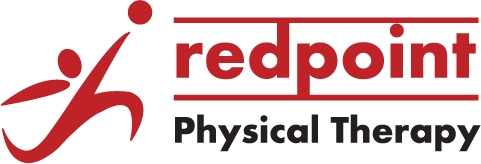My OCD, and your (insert body part here) pain
[http://www.youtube.com/watch?v=Nmh8eJbfdmQ&w=640&h=480]
Posted by Liz Sims, DPT - Redpoint Physical Therapy, Plymouth, MA
I’ll be honest… have some strange quirks about me.
I press the auto lock button for my car 3 times before I reach the front door at work (otherwise I have to return to the car to make sure it’s locked). I place my glass directly in the center of my coaster. I have lists (and post-its) EVERYWHERE - and I don’t feel complete unless all boxes are checked at the end of each day (which, by the way, they never are these days!). I hate making my bed because it takes forever to make it without any wrinkles….
You get the point… I don’t have OCD like you read about (or maybe I do), but I clearly have some nitpicky tendencies. What does this have to do with my PT, Dr. Liz?
EVERYTHING!
It can be speculated that part of the reason I am so successful with such a variety of injuries and ailments is because I’m just as nitpicky in the office as I am in my daily life. Have you ever noticed how annoying I can be when you’re doing the simplest of exercises? I force you to make such minute changes in form that you can hardly tell the difference… and yet, you notice a significant difference in pain after a few sessions.
It’s not a fluke. Proximal stability leads to distal mobility!
What?
I often use the “tree trunk” analogy: If a tree had really thick limbs and a really thin trunk, and a gust of wind came, what would happen? The force of the wind applied to the larger limbs might cause the weaker trunk to give. Why would a human be any different?
Proximal stability refers to the level of strength and control in your core, shoulder blades, and hips as you perform regular movements with your limbs. And, just because you’re strong doesn’t mean you have good control (also, you can have good control but poor strength!). I’ll estimate that close to 75% of my cases involve training to engage muscles in core, shoulder blades, or hips.
Here’s an example. Big Strongman comes into my office with shoulder pain. He tests full strength throughout both shoulders. However, Dr. Sims notices some aberrant motion in his shoulder blades with active movement, as well as increased activation of his upper trapezius muscle (remember that blog?). Further evaluation might reveal that (while he might be able to do 80 sit ups in 2 minutes), he is not engaging his core with active shoulder movements - perhaps I notice he is allowing his low back to arch when he reaches overhead. Shoulder pain, eh?
Mr. Strongman presents with some muscle imbalance. And the arch in his back may be due to poor core stability (or shoulder inflexibility). Better go to PT!
So, Mr. Strongman’s treatment will not consist of the typical strengthening you would expect to see in a PT office… instead, he will be treated with low level core stability exercises (think, breathing while maintaining an abdominal contraction) and retraining of shoulder blade movement with manual facilitation. This will progress to dynamic combination movements with focus on maintaining neutral spine and correct shoulder blade positioning - harder than you think!
I tell you this not to discourage you, but to emphasize the importance of seeking professional help and assessment when dealing with physical issues! I have *way* over-simplified this concept today… trust me, I will get into the dirty-nerdy if you arrive at my office with questions. But trust that there are countless research articles and blogs talking about the importance of this concept. I didn’t make it up, but I certainly enforce it. :)
If you want some more information, check out this blog by Mike Reinold.
And, just for fun... feel free to comment of some of your strange quirks so I don't feel like the only crazy one around here. Happy Monday, friends!

